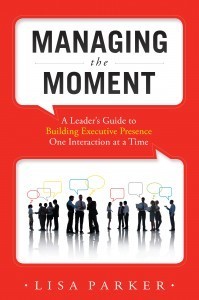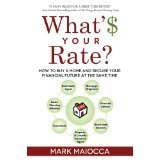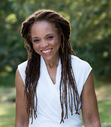Sophfronia Scott's Blog: Sophfronia Scott, Author, page 31
August 24, 2013
Why Writers Must Travel
A few months ago I received a postcard from a writer friend I met just as he was graduating with his MFA from Vermont College of Fine Arts (VCFA). He was traveling in Guatemala and said the new surroundings had affected him deeply. “When I wake up and step out my door and see such beautiful scenery or such color in what people wear I get this urge to write.” He then added, “I hope that when you finish the MFA you’ll give yourself the time to write in new and interesting places.”
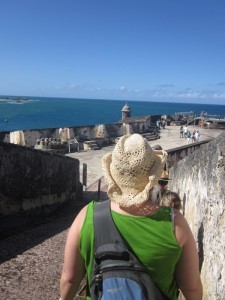 He had planted a seed. I didn’t know what to do with it then, but it touched me enough that I keep his card in my writing journal. VCFA offers its writing students the opportunity to spend a residency abroad in either Slovenia or Puerto Rico. I honestly had no interest in these residencies before, but I can say for a fact that it seems, step-by-step, my learning process at VCFA has brought me to this point where I feel I must go.
He had planted a seed. I didn’t know what to do with it then, but it touched me enough that I keep his card in my writing journal. VCFA offers its writing students the opportunity to spend a residency abroad in either Slovenia or Puerto Rico. I honestly had no interest in these residencies before, but I can say for a fact that it seems, step-by-step, my learning process at VCFA has brought me to this point where I feel I must go.
It seems as though I started the program tightly focused on the page and the mechanics of writing. I wanted to learn about craft and read, read, read and I’m doing so. But I’ve also had teachers who have pulled my head out of the computer and said, “Look around you,” so I could see my writing is happening out there in my physical surroundings as well as within me, reverberating in my heart. Everything is bigger now–my ideas, my courage, my heart, my world. When I received a VCFA email recently announcing registration for the Puerto Rico residency it felt inevitable. “Yes,” I thought. “It’s time for me to go to Puerto Rico.” It’s time to go out like a Gauguin and see what happens to my art when I’m exposed to new voices and new influences.
 I’ve always said one of the best things you can do for yourself as a writer is to get out. Before I was talking about showing up at writing events, meeting other amazing writers and learning as much as you can. This is all still very important. But I urge you to think about the travel component as well. You can either board a plane, take a train or drive someplace different in your car. Just do it. Here’s why:
I’ve always said one of the best things you can do for yourself as a writer is to get out. Before I was talking about showing up at writing events, meeting other amazing writers and learning as much as you can. This is all still very important. But I urge you to think about the travel component as well. You can either board a plane, take a train or drive someplace different in your car. Just do it. Here’s why:
Being in a new place refocuses your writer eye. My friend mentioned the colors and clothing of Guatemala. I get a similar view sitting in a park when I visit New York City. Plunked down in all that diversity, I begin to see stories everywhere.
When you travel you may have experiences with unexpected outcomes. My essays took on a spiritual nature after I did a 3-hour solo sit in the snowy woods of Montpelier. It was a huge surprise and I’m still wrapping my brain around this work.
You develop an awareness of place. You’ll either want to write about the new environment you’ve discovered, or you’ll want to write more than ever about where you came from. Leaving home makes you more aware of the hold it has on you.
For myself I try to travel, near or far, a little bit every month. If all goes well I will be in Puerto Rico for my VCFA residency in January. This autumn I’m making two trips, one as a teacher and the other as a student. By the way, these trips are REALLY inexpensive opportunities. I’d love for you to join me if you can. It would be great to write together!
 Here’s amazing writing event #1: September 6-8 I’ll be at the Hobart Book Village Festival of Women Writers in the gorgeous Catskills of upstate New York. I’m teaching a workshop on “My Big Fat Writing Journal and Other Ways of Organizing Your Creative Life.” The huge and wonderful line up includes my dear friend and Time Magazine colleague Breena Clarke whose novel River Cross My Heart was an Oprah Book Club pick. You can find registration info at this link.
Here’s amazing writing event #1: September 6-8 I’ll be at the Hobart Book Village Festival of Women Writers in the gorgeous Catskills of upstate New York. I’m teaching a workshop on “My Big Fat Writing Journal and Other Ways of Organizing Your Creative Life.” The huge and wonderful line up includes my dear friend and Time Magazine colleague Breena Clarke whose novel River Cross My Heart was an Oprah Book Club pick. You can find registration info at this link.
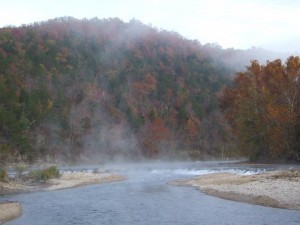 Here’s amazing writing event #2: October 11-13 I’ll travel to Tecumseh, Missouri (near Springfield) for the River Pretty Writers Retreat. The retreat takes place at the beautiful Dawt Mill river resort. I’d love to introduce you to many awesome writers, graduates and faculty, from my VCFA program. Again, this event is really inexpensive, I’m not kidding. Just 35 spots are available so you’ll definitely miss out if you wait too long. Learn more about it and register here.
Here’s amazing writing event #2: October 11-13 I’ll travel to Tecumseh, Missouri (near Springfield) for the River Pretty Writers Retreat. The retreat takes place at the beautiful Dawt Mill river resort. I’d love to introduce you to many awesome writers, graduates and faculty, from my VCFA program. Again, this event is really inexpensive, I’m not kidding. Just 35 spots are available so you’ll definitely miss out if you wait too long. Learn more about it and register here.
If I don’t see you at these events that’s okay, but I will say to you what my friend said to me: I hope one day you will give yourself the time to write in new and interesting places.
Safe travels!

July 24, 2013
Personal Essays: Letting the World In
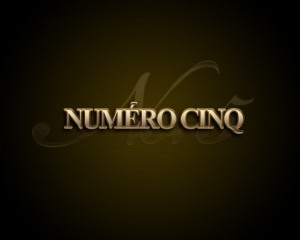 I’ll confess right now: I have a bee in my bonnet when it comes to certain works of nonfiction–memoirs and some personal essays in particular. These pieces tend to have the same issue which I’ll call a failure to communicate. The writer is telling a story, and many times it is a difficult, even harrowing, story but she hasn’t written it in a way that conveys meaning for the reader. I’ve often wondered what’s missing for this work and how to avoid similar pitfalls in my own writing so I explored the issue as part of my MFA studies at the Vermont College of Fine Arts. The result: a craft essay entitled, The Personal Essay and the Pain of Experience: Communicating to the Broadest Possible Audience. As models I examined three texts in particular: Elie Wiesel’s Night, Eula Biss’s Notes from No Man’s Land, and James Baldwin’s Notes of a Native Son. I’m happy to report the online literary journal Numero Cinq has published the piece in its July issue. You can read it at this link. If you’re a writer of creative nonfiction, I hope you’ll find it abundantly useful.
I’ll confess right now: I have a bee in my bonnet when it comes to certain works of nonfiction–memoirs and some personal essays in particular. These pieces tend to have the same issue which I’ll call a failure to communicate. The writer is telling a story, and many times it is a difficult, even harrowing, story but she hasn’t written it in a way that conveys meaning for the reader. I’ve often wondered what’s missing for this work and how to avoid similar pitfalls in my own writing so I explored the issue as part of my MFA studies at the Vermont College of Fine Arts. The result: a craft essay entitled, The Personal Essay and the Pain of Experience: Communicating to the Broadest Possible Audience. As models I examined three texts in particular: Elie Wiesel’s Night, Eula Biss’s Notes from No Man’s Land, and James Baldwin’s Notes of a Native Son. I’m happy to report the online literary journal Numero Cinq has published the piece in its July issue. You can read it at this link. If you’re a writer of creative nonfiction, I hope you’ll find it abundantly useful.
Cheers,

May 3, 2013
My Essay in Chicken Soup for the Soul: Inspiration for Writers
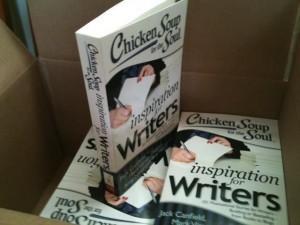 Look what arrived in the mail last week! These are my copies of my latest book, Chicken Soup for the Soul: Inspiration for Writers. I have been a contributor to this popular series of books in the past (Chicken Soup for the African American Woman’s Soul) but recently a new publisher, Amy Newmark, purchased the brand and she has revitalized it and the look of the books in a smart, thoughtful way. I was honored when Amy and I connected and she asked me to write for this new project. What’s it about? The subtitle, as any good subtitle should do, says it all: “101 Motivational Stories for Writers–Budding or Bestselling–from Books to Blogs.” You’ll find my essay, “A Change in Direction,” on page 30 in the “Facing My Fears” section. I hope you’ll get it, enjoy it, and be inspired!
Look what arrived in the mail last week! These are my copies of my latest book, Chicken Soup for the Soul: Inspiration for Writers. I have been a contributor to this popular series of books in the past (Chicken Soup for the African American Woman’s Soul) but recently a new publisher, Amy Newmark, purchased the brand and she has revitalized it and the look of the books in a smart, thoughtful way. I was honored when Amy and I connected and she asked me to write for this new project. What’s it about? The subtitle, as any good subtitle should do, says it all: “101 Motivational Stories for Writers–Budding or Bestselling–from Books to Blogs.” You’ll find my essay, “A Change in Direction,” on page 30 in the “Facing My Fears” section. I hope you’ll get it, enjoy it, and be inspired!
Cheers,

March 12, 2013
Connecting by Heart at Writers Conferences
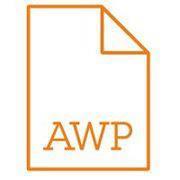 I’m back from spending several snowy days in Boston for the AWP Annual Conference & Bookfair. Next week I’m traveling to Ohio to teach at another writers conference, at Columbus State Community College on March 23. These trips aren’t easy when you consider the time away from my family and the expense they require so why do I do it? Because I like to show up in the world as a writer. Dan Kennedy, a well-known marketer in the entrepreneurial world, says to succeed in most endeavors you have to “be somewhere and be somebody.” For me that means showing up as the author Sophfronia Scott, reading my work, and teaching as much as possible.
I’m back from spending several snowy days in Boston for the AWP Annual Conference & Bookfair. Next week I’m traveling to Ohio to teach at another writers conference, at Columbus State Community College on March 23. These trips aren’t easy when you consider the time away from my family and the expense they require so why do I do it? Because I like to show up in the world as a writer. Dan Kennedy, a well-known marketer in the entrepreneurial world, says to succeed in most endeavors you have to “be somewhere and be somebody.” For me that means showing up as the author Sophfronia Scott, reading my work, and teaching as much as possible.
For you, it could be the process of answering the questions most writers have: “How do I get an agent? How do I get an editor interested in my work?” Honestly, you can send queries until your computer breaks down–and that can be a start–but nothing beats meeting an agent or editor in person and making a sincere connection, not just pitching your book.
AWP stands for the Association of Writers & Writing Programs and their gathering is the largest literary conference in North America. Last week’s session drew 12,000 writers, editors and exhibitors from schools, literary journals, and presses large and small. The conference also features hundreds of panels and readings. When I first saw the program, it was so thick it made me want to lie down and take a nap. I was exhausted just considering my schedule.
But that kind of thinking happened because this was my first AWP Conference and I momentarily had forgotten there were:
specific aspects of publishing or writing I wanted to learn
people I want to see or meet.
I didn’t have to do or attend anything else that didn’t fit in with these two points. So, with this focus in mind, I had a terrific time because I saw friends, met lovely social media contacts in person, and had great conversations with the editors of literary journals I admire.
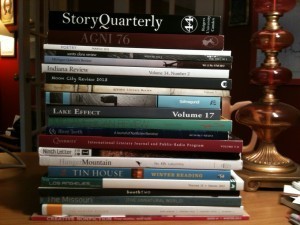 Here’s a sampling of the journals I picked up or discussed at the conference. Some of these, such as AGNI, Hunger Mountain, Poetry, and Tin House, I already subscribe to. Others such as the Kenyon Review, the Indiana Review, Creative Nonfiction and the Missouri Review are journals I’d heard of where I want to submit work. Others were discoveries: Moon City Review, Lake Effect, Santa Clara Review. Online submission processes make it easy for writers to send work to tons of magazines sight unseen. However I prefer to send work to journals I know and admire. I want to hold the publication in my hands, leaf through the pages, read samples, and talk to the editors. The conference allowed me to do that.
Here’s a sampling of the journals I picked up or discussed at the conference. Some of these, such as AGNI, Hunger Mountain, Poetry, and Tin House, I already subscribe to. Others such as the Kenyon Review, the Indiana Review, Creative Nonfiction and the Missouri Review are journals I’d heard of where I want to submit work. Others were discoveries: Moon City Review, Lake Effect, Santa Clara Review. Online submission processes make it easy for writers to send work to tons of magazines sight unseen. However I prefer to send work to journals I know and admire. I want to hold the publication in my hands, leaf through the pages, read samples, and talk to the editors. The conference allowed me to do that.
Will this mean my work will be accepted automatically? No. But we have started a conversation–one I hope will continue as I continue to write and submit work. The editors will get to know my writing better as I hope to know their journals better. This is so much more agreeable than writing and submitting into a void.
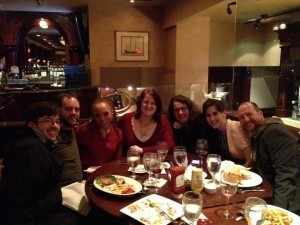 I’ll write more about my experiences in coming days, but for now two highlights of my conference:
I’ll write more about my experiences in coming days, but for now two highlights of my conference:
A student reading and then socializing with my beloved fellow writers from the Vermont College of Fine Arts .
Introducing a dear friend who happens to be a prize-winning writer, to one of my Harvard classmates who happens to be an editor at a top literary journal. There’s nothing better than helping others make great connections.
I encourage you to decide who you want to be as a writer and do your best to surround yourself with friends (yes, friends, not just networking contacts) with whom you can share support and connections. It might make you a more productive writer. For my part, I’m certainly a happier one!
Here’s to your excellent writing life,

February 9, 2013
When Words Fail a Writer
The last time I wrote in this space I reported completing the rough draft of my next novel. That was December 5, 2012, and I was looking forward to reviewing the year past and honoring the work I’d completed over the year as well as that of my clients who published books as well. Then, nine days later, an armed gunman entered the halls of my son’s school, Sandy Hook Elementary, and blew apart our world.
My son’s godmother lost one of her sons, a little boy we loved greatly and whom Tain referred to as his “godbrother.” Our grief was and is unspeakable. I continued to repeat those words in the ensuing days as we fielded a torrent of calls from the media, some from former colleagues asking me to write about the event. “I have no words,” I told them. There I was, just about to celebrate a year of writing more than I’d written in the previous six years and suddenly it had all stopped. I had no words.
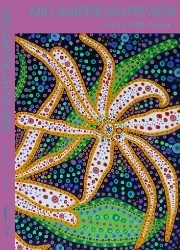 This grief is still fresh. We are less than eight weeks out and still trying to find this supposed “new normal.” However, I am grateful and surprised to feel the words returning. It began with a light shone unexpectedly at the end of December, right before I was scheduled to return to the Vermont College of Fine Arts for winter residency. I received an email from the author Gerald Duff. I had written a review of his novel, Blue Sabine, in the new issue of the literary journal The Mid-American Review and he had just read it. He wrote:
This grief is still fresh. We are less than eight weeks out and still trying to find this supposed “new normal.” However, I am grateful and surprised to feel the words returning. It began with a light shone unexpectedly at the end of December, right before I was scheduled to return to the Vermont College of Fine Arts for winter residency. I received an email from the author Gerald Duff. I had written a review of his novel, Blue Sabine, in the new issue of the literary journal The Mid-American Review and he had just read it. He wrote:
“I want to thank you for your wonderfully perceptive review of Blue Sabine, your insight into what I tried to do in the book, and your taking the time to think deeply and write so gracefully about another person’s work. You have got the goods, to put it simply, as a writer and critic. And I’m looking forward to reading your fiction. Given what I see here in your ability to fathom human intent, desire, failure and triumph, I know that what you put into your fiction will reverberate and shine.”
It took me a moment to realize, to remember, Mr. Duff was talking about me. I had been on a path before the morning of December 14–a path taking me on a glorious exploration of my abilities as a writer. In the midst of my own grief and helping our friends through theirs that path seemed a world away, irrecoverable. Suddenly here was help, like bread crumbs on the road, to show me I could find my way back to it again. And sure enough, the words are beginning to return, little by little. It will take time to see what these words become.
Until then, right now, I will honor the work done in 2012: the novel completed, the short stories and essays written, two published and one receiving an Honorable Mention in the Glimmer Train Fiction Open, and my appearance as a contributor in O, the Oprah Magazine, More Magazine, the New York Times.com and Numéro Cinq. I also say congratulations to clients and students of mine who have published or are about to publish:
Managing the Moment: A Leader’s Guide to Building Executive Presence One Interaction at a Time by Lisa Parker is being published this spring. Lisa was a private book coaching client and a student in my Self-Publishing 101 class.
What’s Your Rate?: How to Buy a Home and Secure Your Financial Future at the Same Time by Mark Maiocca came out last summer. Mark was a private client.
Be True Rich: 3 Simple Keys to Live Your Good Life Now by Katherine C.H.E. is newly published. Katherine attended my Writing Books That Change Lives Workshop.
Living Happier After: 20 Women Talk About Life After Divorce by Wilma Jones. Wilma also attended the Books That Change Lives Workshop.
If you would like assistance with your book project, please know I probably won’t take on any new clients until the spring. You may still send inquiries and get on my waiting list if you think you’ll be ready to go then. I hope you and I will be blessed with many, many, more words as the year goes on, and that we will continue to create work that will change lives.
Best wishes,

November 24, 2012
The Next Big Thing: What I’m Writing Now
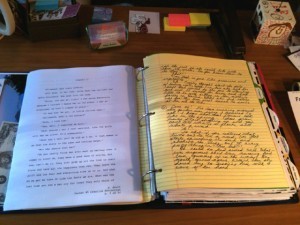 Right at this moment I’m about ten days away from completing the first draft of my next novel. It’s an exciting, scary time, but I’ve learned that when fear steps in the best thing you can do is share it. So when my fellow Vermont College of Fine Arts writer Sion Dayson, author of the forthcoming novel When Things Were Green, asked me to participate in a blog chain of writers talking about their works-in-progress I seized the opportunity. Not all writers like talking about what’s on their screen or in their notebooks, but I believe there comes a time when it can be helpful if only to remind myself that the story running through my head is real.
Right at this moment I’m about ten days away from completing the first draft of my next novel. It’s an exciting, scary time, but I’ve learned that when fear steps in the best thing you can do is share it. So when my fellow Vermont College of Fine Arts writer Sion Dayson, author of the forthcoming novel When Things Were Green, asked me to participate in a blog chain of writers talking about their works-in-progress I seized the opportunity. Not all writers like talking about what’s on their screen or in their notebooks, but I believe there comes a time when it can be helpful if only to remind myself that the story running through my head is real.
This series, in which each writer has to answer 10 questions, also attracted me because I get to “tag” five other authors so they too can share their work and meet new readers. I love that because I’m all for making connections. So, here we go…
What is your working title of your book?
The Affairs of Midnight
Where did the idea come from for the book?
For the longest time I’ve had a quiet obsession with Choderlos de Laclos’s novel Les Liaisons Dangereuses, originally published in 1781, and all the film and stage versions made from it. I finally realized I was simply fascinated with these characters and wanted to know more about why they behaved so scandalously. I decided the only way I could answer my questions would be to write my own version.
What genre does your book fall under?
Because my novel takes place in 1940s Harlem I consider it historical/literary fiction.
Which actors would you choose to play your characters in a movie rendition?
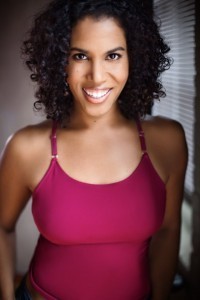 Funny you should ask! I originally wrote the story as a screenplay. I had Denzel Washington constantly in my mind as I wrote the lead character of Valiant Jackson who is Valmont in the de Laclos version. At various times I pictured Halle Berry, Angela Bassett and Lynn Whitfield as the Madame Merteuil character, Mae Malveaux, and honestly, though you may not know her, I’ve always had my friend Leslie Lewis Sword (left) in mind for Elizabeth Townsend, the Madame de Tourvel character. Leslie has been my muse throughout this whole process. She arranged readings of the screenplay in both Los Angeles and New York and encouraged me to pursue the novel. I’ll eventually write a stage version as well because the work was so well-received by the actors in the readings, many of them Broadway actors such as John Eric Parker that I would love to give them the opportunity to bring the story to life in their unique ways.
Funny you should ask! I originally wrote the story as a screenplay. I had Denzel Washington constantly in my mind as I wrote the lead character of Valiant Jackson who is Valmont in the de Laclos version. At various times I pictured Halle Berry, Angela Bassett and Lynn Whitfield as the Madame Merteuil character, Mae Malveaux, and honestly, though you may not know her, I’ve always had my friend Leslie Lewis Sword (left) in mind for Elizabeth Townsend, the Madame de Tourvel character. Leslie has been my muse throughout this whole process. She arranged readings of the screenplay in both Los Angeles and New York and encouraged me to pursue the novel. I’ll eventually write a stage version as well because the work was so well-received by the actors in the readings, many of them Broadway actors such as John Eric Parker that I would love to give them the opportunity to bring the story to life in their unique ways.
What is the one-sentence synopsis of your book?
Most people know the story of Dangerous Liaisons so I usually just say the book is “an African-American version of Dangerous Liaisons set in 1940s Harlem.” But if I had to summarize solely by plot I would say my novel is about a man who has toyed with women all his life, but finally loses his heart to a woman who proves there can be good in the world for him—including love.
Will your book be self-published or represented by an agency?
It will be represented by an agency, possibly the same one that sold my first novel, All I Need to Get By to St. Martin’s Press but I haven’t made that decision yet.
How long did it take you to write the first draft of your manuscript?
I’ve had several false starts, but this entire draft has been the focus of my current semester at the Vermont College of Fine Arts. I’ll complete the draft with my last writing packet and that is due in December. So the answer is about six months.
What other books would you compare this story to within your genre?
Love by Toni Morrison and Fortune’s Rocks by Anita Shreve. Both authors have greatly influenced me in my development as a writer.
Who or what inspired you to write this book?
As I said earlier, I’ve had the idea percolating in my head for a long time, but it really took off when I met my friend, Leslie Lewis Sword, at a theater producing workshop in New York City. She’s a gorgeous woman to begin with, but there is just something about her vibrant energy that I recognized as similar to many of the women in the story. I loved her energy, loved her, and I wanted to write the screenplay for her. The novel naturally followed because it is my genre of choice and there were so many details that I couldn’t go into with a screenplay that I saw so clearly in my mind. It’s been satisfying putting it all into a book.
What else about your book might pique the reader’s interest?
I think we’re all fascinated by the inner workings of love. Whether we realize it or not we are studying love when we follow the Petraeus affair in the news, when we watch a soap opera, when we read romance novels, when we read about fatal attractions in the newspaper, and when we see romantic comedies at the movie theater. I believe the interest goes beyond the physical, but that doesn’t mean I ignore the physical because that’s a huge part of this story as well. However I think my readers will be interested in being that fly on the wall as they watch how my characters love and what happens to them—how they change because of that love.
And now, introducing…
I’m happy to have you meet these wonderful writers and I hope you’ll check out their works-in-progress as well:
Breena Clarke, a dear friend and former colleague (we were at Time magazine together), is a fabulous writer and can tell the tale of having her debut novel, River, Cross My Heart chosen as an Oprah Book Club pick.
Katherine Scott Crawford hails from that fine tradition of southern women writers. She’s also an accomplished weaver of historical fiction. We’re both studying for our MFA at the Vermont College of Fine Arts and her novel Keowee Valley has just been published.
Bren McClain is a Facebook friend and another southern writer whose novel tells the story of a woman whose relationship with a mother cow teaches her about life—but I’ll let her give you the details!
I met Jolina Petersheim via Twitter and she caught my eye because she’s one of the most positive tweeters out there. She too is writing her take on a venerable classic, The Scarlet Letter, so we have a bit in common.
Natalia Sylvester is a novelist and freelance journalist whose debut novel, Where We Once Belonged, goes to press in 2014. Her articles have appeared in Latina, Writer’s Digest, and The Writer magazines.
Message for tagged authors:
Rules of the Next Big Thing
***Use this format for your post
***Answer the ten questions about your current WIP (work in progress)
***Tag five other writers/bloggers and add their links so we can hop over and meet them. Be sure to line up your five people in advance. (Note from Sophfronia: FYI, I’ve seen these posts run with only three or four tagged writers.)
Ten Interview Questions for the Next Big Thing:
What is your working title of your book?
Where did the idea come from for the book?
What genre does your book fall under?
Which actors would you choose to play your characters in a movie rendition?
What is the one-sentence synopsis of your book?
Will your book be self-published or represented by an agency?
How long did it take you to write the first draft of your manuscript?
What other books would you compare this story to within your genre?
Who or what inspired you to write this book?
What else about your book might pique the reader’s interest?
Include the link of who tagged you and this explanation for the people you have tagged.
September 15, 2012
My Essay in Numero Cinq
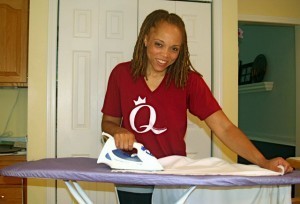 I have an essay, “White Shirts,” published this week in the online literary journal Numéro Cinq. It’s about a walk with Lena Horne; it’s about ironing; it’s about my dad. It’s about a lot of things! I am delighted, excited and just plain giddy. Please read and comment on the site at this link. While you’re there enjoy the whole issue. Every piece in Numero Cinq is gorgeous and well-chosen by the amazing author Douglas Glover. I hope you enjoy the piece and I can’t wait to hear what you think.
I have an essay, “White Shirts,” published this week in the online literary journal Numéro Cinq. It’s about a walk with Lena Horne; it’s about ironing; it’s about my dad. It’s about a lot of things! I am delighted, excited and just plain giddy. Please read and comment on the site at this link. While you’re there enjoy the whole issue. Every piece in Numero Cinq is gorgeous and well-chosen by the amazing author Douglas Glover. I hope you enjoy the piece and I can’t wait to hear what you think.

September 10, 2012
Book Review: Water and Abandon
 Water and Abandon by Robert Vivian
Water and Abandon by Robert Vivian
My rating: 4 of 5 stars
Disclosure: The author of this book is a mentor and friend. (In fact, there’s a picture of us in the header of this blog.) But as someone who has closely read all of his novels I believe I can offer a clear-eyed take on the style and structure of his work without fear of bias. So, here’s what I have to say about Water and Abandon.
What is the shape of grief? For Hank Little, whose 17-year-old daughter Kelsey went missing and was found drowned in the Sicangu River one year prior to the opening chapter of Water and Abandon, it is “the apostrophized arch of her foot” dragging a shredded white plastic bag when divers pulled her body from the water. For his wife Sam, it is the evaporated form of an intimacy she once thought she possessed with her cherished daughter. But when an autopsy reveals Kelsey was nearly four months pregnant at the time of her death, Sam realizes she has more than one apparition to contend with. For Javier Martinez, Kelsey’s boyfriend and father of her unborn child, the shape of grief lay in “the dunes of her tight backside or the little dimpled skulls of her kneecaps” and in her bright, shining love that he thought would save him from a hopeless future. In their contemplation of their grief the characters of Robert Vivian’s fourth novel allow their lives to deteriorate until the anniversary of Kelsey’s death demands that they account for the lost year. There is a reckoning of sorts happening here and we walk through it with them questioning whether or not things will be any different for them in another twelve months’ time.
Reading this book is akin to an ongoing meditation as the characters focus hard on their grief and swing back and forth between water and abandon. The “water” is the Sicangu River and all the dead it envelopes. It is as much a character in this novel as any two-footed being, and it holds, soothes, heals and lies just as effectively. The only one who knows this for certain is Ike Parrish, a veteran of the Korean War, who lives a reclusive existence near the river and believes his epileptic seizures are actually “river spells” that allow him to know all that the Sicangu has taken into it, including what happened to Kelsey. The “abandon” is twofold: first, it involves the many instances of Hank, Sam and Javier throwing themselves into extreme experiences, physically and mentally, thinking it will somehow get them to the other side of their grief. Next, it is actual abandonment: Kelsey mysteriously walking away from her family, Hank and Sam virtually abandoning their marriage, Javier abandoning all the good he did while he was with Kelsey, and Kelsey ignoring a dying man’s pleas for her to abandon him.
Vivian’s writing, as always, has a quiet, devastating beauty about it. One can’t help but feel the pain when Sam rushes to the attic in her house because she thinks she hears her daughter calling her:
“But Kelsey was going away even as she was making her way toward her, the light getting smaller and smaller like the rolling of a pencil diminishing with every precious millimeter of turning though the word and the cry kept their bell-tone brightness even as it faded, Sam reaching out to the narrowing spindle of light fast approaching the vanishing point a few seconds before Kelsey’s voice went silent and Sam was left reaching out to nothing in the sudden darkness of the attic, the pinpoint of light gone like a switch turned off somewhere in heaven.”
The downside to reading such gorgeous work is it can be emotionally exhausting as we watch the author dissect these people’s hearts with such aching surgical precision. Plus, Vivian constantly challenges us to take on more and more of what his characters are feeling. This especially happens in the parts of the narrative where he makes us privy to Kelsey’s thoughts and actions in the weeks before her death. We’re put in the uncomfortable position of being like Ike Parrish—we have information the other characters don’t have and we want to give it to them to assuage their grief, but we can’t. There’s also the sad realization that even if we could tell Hank, Sam and Javier what we know, it may not really help. Perhaps that’s Vivian’s point: to show us that with this kind of grief nothing can help, no one can help. These broken characters can only commiserate with those who know the same kind of loss.
The one aspect of this well-crafted novel I would question is the use of these portions written from Kelsey’s point of view. They are wonderfully written, but I believe Kelsey is more present in her absence, just as the powerful personality of the deceased Rebecca is in the Daphne du Maurier novel. The characters in Water and Abandon are not just missing Kelsey—they are missing the way she loved them, the way she moved other people, the way she had of being in the world that formed a necessary light and hope for them. The person who inspires that kind of emotion is already at once real and alive. We don’t need to know more than that even if she is telling us in her own words. In the end the shape of grief is the shape of Kelsey herself. The author can trust that, in showing us the depths of her loved ones’ suffering, he has already drawn her well enough for us to see her and know her for ourselves.
August 30, 2012
Your Writing: What’s It To You?
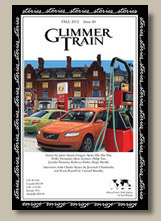 The Fall 2012 issue of Glimmer Train (Issue 84) opens with the following quote:
The Fall 2012 issue of Glimmer Train (Issue 84) opens with the following quote:
“You do get to a certain point in life where you have to realistically, I think, understand that the days are getting short and you can’t put things off, thinking you’ll get to them someday. If you really want to do them, you better do them…So I’m very much a believer in knowing what it is that you love doing, so that you can do a great deal of it.
You know when my close friend died, you know–we always played the game, What would your last meal be? Mine happens to be a Nate ‘n Al’s hot dog. But Judy was dying of throat cancer, and she said, I can’t even have my last meal.
And that’s what you have to know: If you’re serious about it, have it now. Have it tonight, have it all the time, so that when you’re on your death bed, you’re not thinking, Oh, I should have had more of Nate ‘n Al’s hot dogs.” –Nora Ephron (May 19, 1941-June 26, 2012) interviewed on NPR November 9, 2010.
Reading this was, for me, one of those wonderful instances of discovering someone had put words to a nameless thing I’m trying to express in my life. The “thing” is nameless because I’m acting on raw emotion and instinct. If you asked me to explain in detail you may or may not know what I’m talking about. But the late Ms. Ephron has given me, through her wisdom, an opening here. Two of her points struck my heart with a painful clarity:
knowing what it is that you love doing
do a great deal of it
I’ve known my responses to these two points for a long time: I know I love writing–my writing. I know I want to do a great deal of my writing. My problem has always been the question, How do I make it happen? The funny thing is, I’ve also had the answer–my answer– for a while: enroll in a masters program and get an MFA in creative writing.
However I didn’t do it for years because whenever I spoke about the idea someone would usually say, “You don’t need to do that, you’ve already published a novel.” Or they would talk about the endeavor being a waste of money. I would listen to these thoughts, put aside the concept of getting an MFA, and keep floundering along on my own. But, finally, early last year I began gaining confidence in my thought process which was this: There are certain things I want to accomplish as a writer; there’s a way I want to “show up” in the world as a writer. I also wanted a supportive community of writers/friends/teachers and I wanted them to inspire, encourage, and challenge me to write what I’ve never written before.
 When the Vermont College of Fine Arts invited me to an open house in the spring of 2011 I went and after just one day on the Montpelier campus I came away with a handful of story ideas and a poem. I hadn’t written a poem since college! The experience confirmed everything I had suspected: my heart hungered for this learning. I needed it for me; it was what I wanted for my writing. It didn’t matter how little it made sense to anyone else.
When the Vermont College of Fine Arts invited me to an open house in the spring of 2011 I went and after just one day on the Montpelier campus I came away with a handful of story ideas and a poem. I hadn’t written a poem since college! The experience confirmed everything I had suspected: my heart hungered for this learning. I needed it for me; it was what I wanted for my writing. It didn’t matter how little it made sense to anyone else.
The loss of a close family member added urgency to my quest, increasing my awareness of, as Ms. Ephron put it, the days getting short. Suddenly I had no patience for all the reasons I didn’t need an MFA. I decided to focus on my reasons why I did.
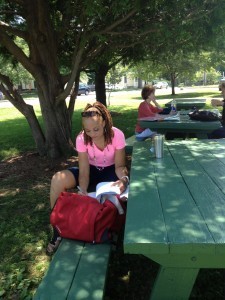 Recently I heard from a writer considering attending VCFA, and the person commented, “I’m not sure I can see spending 40k.” That’s okay. We each make our choices depending on what we can “see.” I see the writer I want to be. I don’t particularly care about the money–I’ve had student loans before and I don’t mind having them again. I can’t put a price tag on what VCFA means to me. It has been less than a year and already I’ve grown more and produced more as a writer than I have in my previous five years. I love the people around me, teachers and students, and my life is different because of them. A friend, after seeing a photo of me writing at my VCFA summer residency, commented, “I love it! You are in your joy!” Yes. She is absolutely correct. To quote the MasterCard commercial, all this to me is priceless.
Recently I heard from a writer considering attending VCFA, and the person commented, “I’m not sure I can see spending 40k.” That’s okay. We each make our choices depending on what we can “see.” I see the writer I want to be. I don’t particularly care about the money–I’ve had student loans before and I don’t mind having them again. I can’t put a price tag on what VCFA means to me. It has been less than a year and already I’ve grown more and produced more as a writer than I have in my previous five years. I love the people around me, teachers and students, and my life is different because of them. A friend, after seeing a photo of me writing at my VCFA summer residency, commented, “I love it! You are in your joy!” Yes. She is absolutely correct. To quote the MasterCard commercial, all this to me is priceless.
Only you can know if you would value such an experience, or if this is even what you want or need as a writer. It is worth asking, though, so you can get what you need and begin having a “great deal” of what you love in your life all the time.
So…What do you want as a writer and how much is it worth to you?

Sophfronia
August 10, 2012
Traveling at the Speed of Write
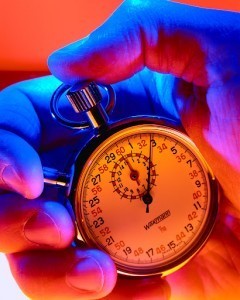 I feel I need to writer faster. And it’s not because I have deadlines looming (which I do) and it’s not because I’m writing at a snail’s pace–I’m really not. It’s because I’m in this place where writing is leading to more writing. Ever since I started the MFA in Writing program at the Vermont College of Fine Arts, I’m having more ideas and more work I want to produce. The projects currently jostling for space in my brain include a novel, an emotionally hefty personal essay and a short story. There’s more percolating, but those three pieces are under my fingers right now. Make no mistake though: I want to get to the percolating ones too.
I feel I need to writer faster. And it’s not because I have deadlines looming (which I do) and it’s not because I’m writing at a snail’s pace–I’m really not. It’s because I’m in this place where writing is leading to more writing. Ever since I started the MFA in Writing program at the Vermont College of Fine Arts, I’m having more ideas and more work I want to produce. The projects currently jostling for space in my brain include a novel, an emotionally hefty personal essay and a short story. There’s more percolating, but those three pieces are under my fingers right now. Make no mistake though: I want to get to the percolating ones too.
Many writers tend to think in terms of speed and flow. The work comes either quickly and easily or it doesn’t. When it’s slow and difficult we start dreading writer’s block. But what’s really happening when we speed up or slow down with our writing? I think this is worth figuring out if only so we don’t beat ourselves up on the hard days. Here’s what I learned about my writing speed. I hope it helps you learn about yours.
First of all, I should say there is a virtue to writing quickly. I tell students in my classes and workshops all the time about how the first draft doesn’t have to be pretty, that they can just bang it right out. The initial writing is the hard part–rewriting is relatively easy. However the speed thing hasn’t been working out for me. Earlier this week I noticed something was interrupting my “bang it out” process. I decided to go to the library one afternoon so I could observe myself for a few quiet hours as I wrote as fast as I could. At first I thought I would be slowed by trying to write too perfectly, but no. I was letting the cliches roll and leaving plenty of awkward sentences to be tended to later. My page count grew.
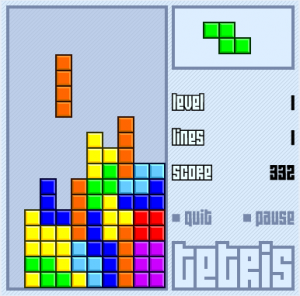 Then I had one of those light bulb moments when I realized a certain action happening in my story would be better performed by a different character. The change opened up a wonderful range of possibilities and connected well with my overall theme. This is when the process slowed. Instead of writing fast, I had a puzzle to solve and the puzzle put the brake on my work. It was like playing “Tetris,” that computer game where you try to place blocks of various shapes as they fall from the top of the screen. When you fill a line of blocks, the line quickly disappears as more blocks fall. I couldn’t write so fast while playing Tetris on the page. As I wrote through my new idea I could see pieces of the puzzle falling all over the place. I would catch them, rearrange them. Sometimes I would have to turn or flip a piece to get it to fit into the puzzle. Once I got all the blocks filled in I could fly and write quickly again. But soon more pieces would fall and I had to slow down and go back to working the puzzle.
Then I had one of those light bulb moments when I realized a certain action happening in my story would be better performed by a different character. The change opened up a wonderful range of possibilities and connected well with my overall theme. This is when the process slowed. Instead of writing fast, I had a puzzle to solve and the puzzle put the brake on my work. It was like playing “Tetris,” that computer game where you try to place blocks of various shapes as they fall from the top of the screen. When you fill a line of blocks, the line quickly disappears as more blocks fall. I couldn’t write so fast while playing Tetris on the page. As I wrote through my new idea I could see pieces of the puzzle falling all over the place. I would catch them, rearrange them. Sometimes I would have to turn or flip a piece to get it to fit into the puzzle. Once I got all the blocks filled in I could fly and write quickly again. But soon more pieces would fall and I had to slow down and go back to working the puzzle.
Okay, now I know: this is my process, with fiction anyway. Sometimes I will be fast, sometimes not, especially as I see patterns developing in my story and I work to capture all these pieces of light. The next step? Learning to accept my process and be patient with myself, knowing I’ll complete the work as long as I remain persistent. What do you have to learn about your process and how fast you write?
Let me know and then? Keep writing!


